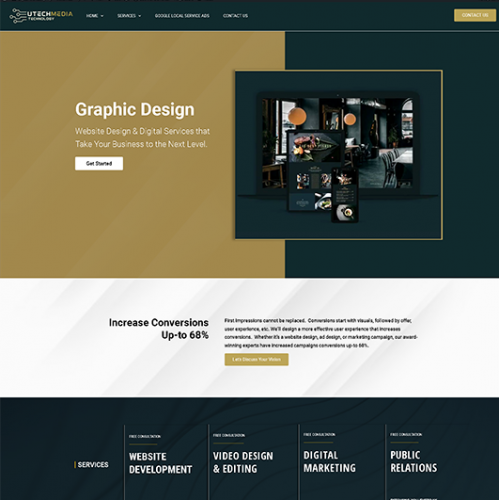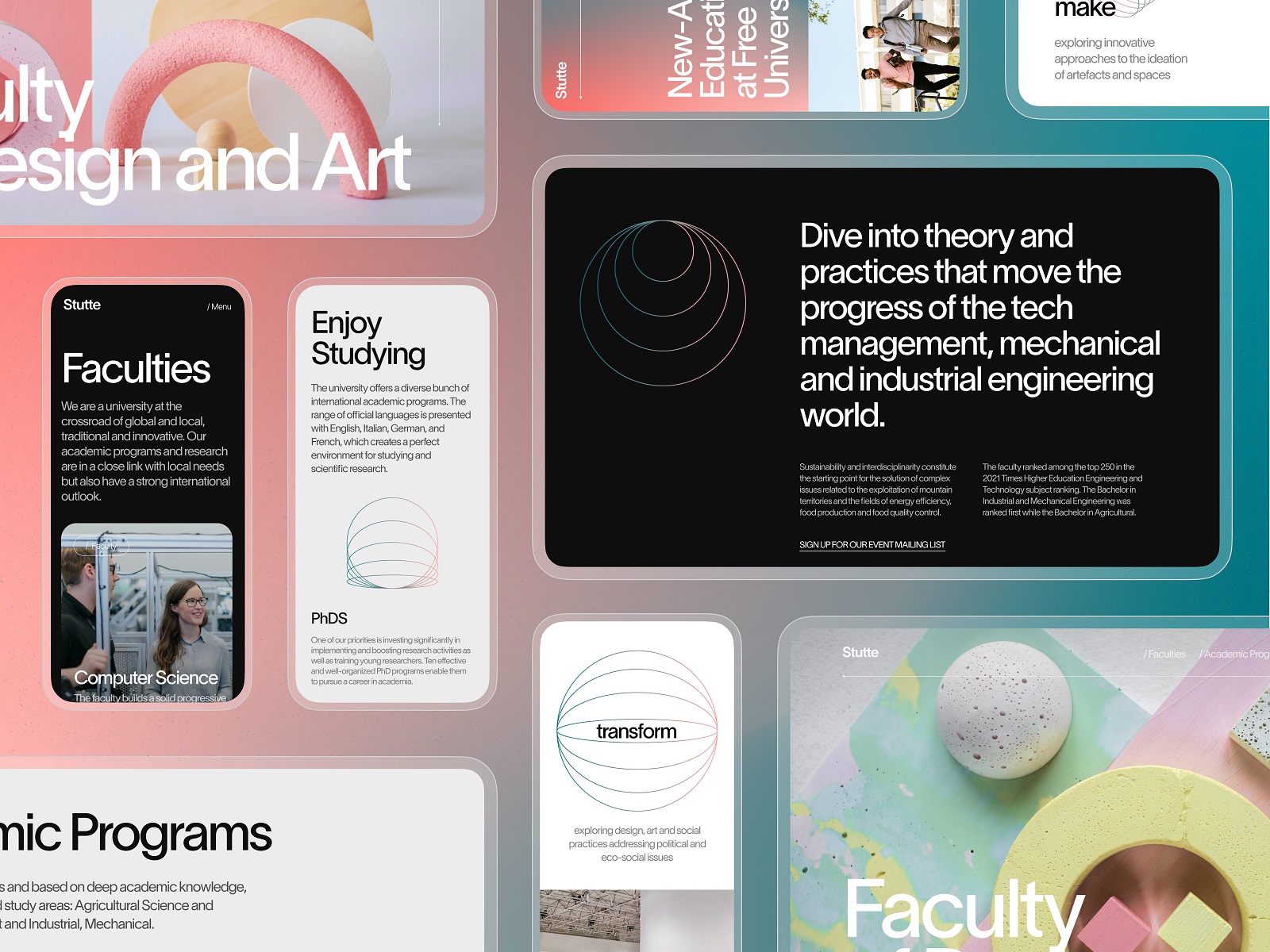Vital Concepts of Web Site Style: Producing User-Friendly Experiences
By concentrating on individual demands and preferences, designers can cultivate interaction and fulfillment, yet the implications of these concepts prolong beyond plain functionality. Recognizing exactly how they link can substantially impact a website's overall performance and success, prompting a more detailed assessment of their specific functions and cumulative influence on customer experience.

Importance of User-Centered Design
Focusing on user-centered style is important for creating effective internet sites that meet the demands of their target audience. This approach places the user at the forefront of the style process, ensuring that the internet site not just functions well yet also reverberates with individuals on an individual level. By understanding the individuals' preferences, actions, and goals, developers can craft experiences that promote engagement and satisfaction.

Additionally, adopting a user-centered layout viewpoint can bring about enhanced accessibility and inclusivity, catering to a varied audience. By considering numerous customer demographics, such as age, technological efficiency, and social backgrounds, designers can produce web sites that are welcoming and practical for all.
Ultimately, focusing on user-centered layout not only enhances individual experience yet can also drive crucial organization outcomes, such as boosted conversion rates and client commitment. In today's affordable electronic landscape, understanding and prioritizing individual requirements is a vital success variable.
Instinctive Navigating Structures
Reliable internet site navigating is usually a crucial factor in boosting individual experience. Instinctive navigating structures enable customers to locate information promptly and successfully, minimizing irritation and raising interaction.
To produce instinctive navigation, developers must prioritize quality. Tags should be familiar and detailed to individuals, preventing jargon or uncertain terms. A hierarchical framework, with main groups resulting in subcategories, can even more aid users in understanding the partnership between various sections of the website.
In addition, incorporating aesthetic cues such as breadcrumbs can guide customers with their navigating path, permitting them to quickly backtrack if needed. The addition of a search bar also boosts navigability, granting customers guide access to web content without having to browse with numerous layers.
Receptive and Flexible Layouts
In today's electronic landscape, making sure that web sites operate flawlessly across numerous gadgets is necessary for individual fulfillment - Website Design. Receptive and flexible formats are two vital techniques that allow this functionality, dealing with the varied range of screen dimensions and resolutions that customers might run into
Receptive layouts utilize liquid grids and flexible photos, enabling the website to immediately readjust its elements based upon the display measurements. This technique offers a regular experience, where content reflows dynamically to fit the viewport, which is especially helpful for mobile individuals. By making use of CSS media queries, designers can develop breakpoints that enhance the format for different devices without the need for separate layouts.
Flexible formats, on the other hand, use predefined formats for specific display dimensions. When an individual accesses the website, the server detects the device and serves the suitable design, ensuring an enhanced experience for varying resolutions. This can result in quicker filling times and improved efficiency, as each layout is customized to the gadget's capacities.
Both flexible and receptive designs are vital for boosting individual involvement and complete satisfaction, inevitably adding to the web site's overall efficiency in fulfilling its objectives.
Regular Visual Hierarchy
Developing a constant aesthetic power structure is critical for assisting users with a website's content. This principle guarantees that information is provided in a manner that is both interesting and user-friendly, permitting individuals to quickly comprehend the material and browse. A well-defined hierarchy uses different layout components, such as dimension, color, spacing, and contrast, to produce a clear distinction in between different types of web content.

Furthermore, regular application of these visual hints throughout the internet site cultivates familiarity and trust fund. Customers can swiftly learn to acknowledge patterns, making their interactions much more efficient. Ultimately, a solid visual pecking order not just boosts individual experience yet also enhances total site use, encouraging deeper involvement and helping with the desired activities on a website.
Availability for All Customers
Accessibility for all customers is a fundamental element of web site layout that ensures everybody, regardless of their handicaps or capacities, can engage with and advantage from visit this site on-line web content. Creating with availability in mind entails implementing methods that fit diverse individual demands, such as those with aesthetic, acoustic, electric motor, or cognitive impairments.
One necessary guideline is to comply with the Web Content Accessibility Standards (WCAG), which supply a framework for developing accessible digital experiences. This includes using sufficient color contrast, providing text alternatives for photos, and making certain that navigation is keyboard-friendly. Furthermore, utilizing responsive design techniques makes sure that websites operate properly throughout different gadgets and display dimensions, additionally improving availability.
One more critical factor is this article using clear, succinct language that prevents jargon, making material understandable for all individuals. Engaging customers with assistive modern technologies, such as display visitors, requires mindful interest to HTML semantics and ARIA (Available Rich Net Applications) functions.
Ultimately, focusing on access not just fulfills lawful commitments however also broadens the audience reach, promoting inclusivity and enhancing user fulfillment. A commitment to ease of access mirrors a devotion to creating fair digital settings for all individuals.
Conclusion
In final thought, the essential concepts of site design-- user-centered design, intuitive navigation, receptive layouts, regular aesthetic hierarchy, and accessibility-- collectively add to the development of straightforward experiences. Website Design. By focusing on user needs and making sure that all people can efficiently involve with the site, designers boost use and foster inclusivity. These concepts not only boost user complete satisfaction yet additionally drive favorable business results, eventually showing the crucial value of thoughtful internet site design in today's electronic landscape
These methods supply invaluable insights into user expectations and pain points, allowing developers to customize the internet site's attributes and material as necessary.Reliable web site navigating is frequently an important variable in boosting customer experience.Developing a constant aesthetic hierarchy is pivotal for guiding customers via an internet site's content. Eventually, a strong aesthetic power structure not just boosts customer experience however likewise improves overall site usability, motivating much deeper interaction and promoting the desired activities on an internet site.
These principles not only enhance individual fulfillment but additionally drive favorable service results, ultimately showing the critical importance of thoughtful website layout in today's digital landscape.